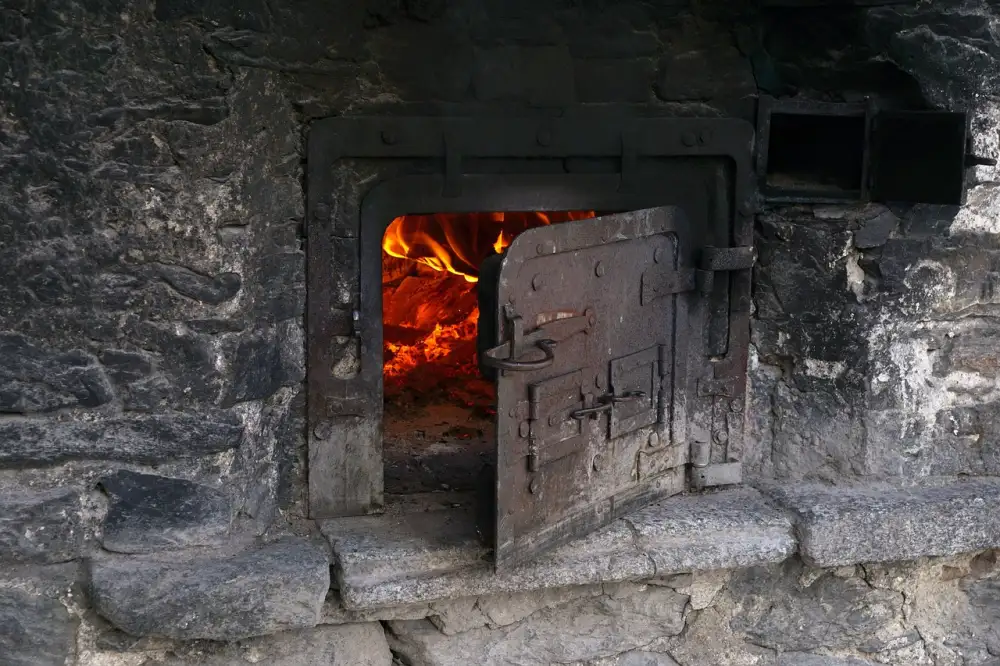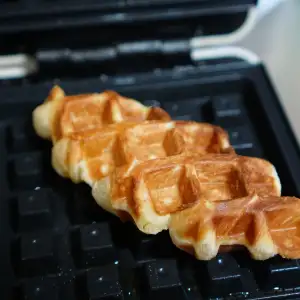Mastering the Art of Cooking with a Convection Oven: A Beginner's Guide for Home Chefs

- Understanding the Basics of a Convection Oven
- Preheating Your Convection Oven
- Adjusting Cooking Times and Temperatures
- Proper Placement of Food in a Convection Oven
- Using the Convection Setting for Baking
- Using the Convection Setting for Roasting
- Using the Convection Setting for Broiling
- Cleaning and Maintenance Tips for Your Convection Oven
Convection ovens have become increasingly popular in home kitchens due to their ability to cook food faster and more evenly. Unlike traditional ovens, which rely on radiant heat, convection ovens use a fan to circulate hot air throughout the cooking chamber. This constant circulation of hot air results in quicker cooking times and more consistent temperatures. Whether you're a beginner or an experienced chef, mastering the art of cooking with a convection oven can elevate your culinary skills to new heights. In this beginner's guide, we will explore the basics of convection ovens and provide you with essential tips and techniques for achieving delicious results every time. So let's dive in and unlock the full potential of your convection oven!
Understanding the Basics of a Convection Oven
A convection oven is a kitchen appliance that uses a fan and exhaust system to circulate hot air around the food, resulting in faster and more even cooking. Unlike conventional ovens, which rely on radiant heat from the top and bottom heating elements, convection ovens distribute heat evenly throughout the cooking chamber.
The main advantage of a convection oven is its ability to cook food more quickly than traditional ovens. The circulating hot air reduces cooking time by up to 25%, making it ideal for busy home chefs who want to prepare meals efficiently.
In addition to speed, convection ovens also offer superior browning and crisping capabilities. The constant circulation of hot air ensures that food cooks evenly on all sides, resulting in beautifully golden crusts on baked goods and perfectly browned meats.
It's important to note that not all recipes are designed for convection ovens. Some dishes may require adjustments in cooking time or temperature to account for the increased efficiency of convection cooking. However, many modern recipes now include instructions for both conventional and convection ovens, making it easier for home chefs to adapt their favorite dishes.
By understanding the basics of how a convection oven works, home chefs can take full advantage of this versatile appliance and elevate their cooking skills to new heights. With faster cooking times, improved browning, and even heat distribution, mastering the art of cooking with a convection oven opens up a world of culinary possibilities.
Preheating Your Convection Oven
Preheating your convection oven is an essential step to ensure even cooking and optimal results. Unlike traditional ovens, convection ovens rely on the circulation of hot air to cook food faster and more evenly. To preheat your convection oven, simply set the desired temperature and allow it to heat up for about 10-15 minutes. This will ensure that the oven reaches the correct temperature before you start cooking. Remember, preheating is crucial for achieving consistent and reliable cooking results with your convection oven.
Adjusting Cooking Times and Temperatures
One of the key benefits of cooking with a convection oven is its ability to cook food faster and more evenly. However, this also means that you need to make some adjustments to your cooking times and temperatures compared to traditional ovens.
When using a convection oven, it is recommended to reduce the cooking temperature by about 25 degrees Fahrenheit (or 15 degrees Celsius). This lower temperature ensures that your food doesn't overcook or burn on the outside while still being cooked thoroughly on the inside.
In terms of cooking times, you can typically reduce the time by about 25% compared to conventional ovens. For example, if a recipe calls for baking something for 30 minutes in a regular oven, you would only need to bake it for around 22-23 minutes in a convection oven.
However, it's important to note that these are just general guidelines. Every convection oven is slightly different, so it's best to experiment and adjust accordingly based on your specific model. Keep an eye on your food as it cooks and use a reliable meat thermometer or toothpick test to ensure doneness.
By understanding how adjusting cooking times and temperatures work in a convection oven, you'll be able to achieve perfectly cooked meals every time. So don't be afraid to experiment and find what works best for you and your favorite recipes.
Proper Placement of Food in a Convection Oven
Proper placement of food in a convection oven is crucial for achieving even and consistent cooking results. Unlike traditional ovens, convection ovens use a fan to circulate hot air, which can affect the way food cooks. To ensure optimal cooking, it's important to follow these placement guidelines:
1. Use shallow and flat pans: Choose pans that are wide and shallow rather than deep. This allows the hot air to circulate around the food more effectively, ensuring even cooking.
2. Leave space between dishes: Avoid overcrowding the oven by leaving some space between dishes. This allows the hot air to flow freely around each item, preventing uneven cooking.
3. Place heavier items on lower racks: If you're cooking different types of food simultaneously, place heavier items on the lower racks. The heat tends to be more intense at the bottom of the oven, so placing heavier dishes there helps balance out the cooking process.
4. Use baking sheets with low sides: When baking cookies or pastries, opt for baking sheets with low sides or no sides at all. This allows for better air circulation and promotes browning and crisping.
5. Rotate pans halfway through cooking: To ensure even browning, rotate pans halfway through the cooking process. This helps prevent one side of the dish from getting too browned while another side remains undercooked.
By following these placement tips, you can make the most out of your convection oven and achieve perfectly cooked meals every time.
Using the Convection Setting for Baking
One of the great advantages of a convection oven is its ability to bake food evenly and quickly. When using the convection setting for baking, there are a few key points to keep in mind.
Firstly, it's important to adjust the temperature. In general, you should reduce the temperature by about 25 degrees Fahrenheit compared to what a recipe calls for when using a conventional oven. This is because the hot air circulation in a convection oven cooks food faster.
Next, consider using baking pans with low sides or rimless baking sheets. This allows for better air circulation and ensures that your baked goods cook evenly.
It's also crucial to monitor your baking time. Due to the efficient heat distribution, food tends to cook faster in a convection oven. Start checking for doneness a few minutes earlier than you normally would with a regular oven.
Lastly, avoid overcrowding the oven. Leave enough space between your baked goods to allow hot air to circulate freely. If necessary, bake in batches rather than trying to fit everything at once.
By following these tips, you can achieve perfectly baked goods every time using the convection setting on your oven. Experiment with different recipes and have fun exploring all the possibilities that this versatile feature has to offer!
Using the Convection Setting for Roasting
Roasting is a popular cooking method that brings out the flavors and textures of meats, vegetables, and even fruits. With a convection oven, you can take your roasting game to the next level.
When using the convection setting for roasting, there are a few key points to keep in mind. First, make sure to preheat your oven to the desired temperature. This will ensure that your food cooks evenly and efficiently.
Next, place your meat or vegetables on a roasting rack or directly on a baking sheet. The elevated position allows hot air to circulate around the food, resulting in crispy exteriors and juicy interiors.
It's important to note that when using a convection oven for roasting, you may need to adjust the cooking time slightly. The hot air circulating around the food can cook it faster than in a conventional oven. Start by reducing the cooking time by about 25% and monitor closely to avoid overcooking.
To achieve optimal results, use lower temperatures than you would with a conventional oven. Lower temperatures allow for longer cooking times without drying out the food. Aim for temperatures around 25°F (14°C) lower than what your recipe suggests.
Lastly, remember to rotate your food halfway through the cooking process. This ensures even browning and prevents any one side from getting too crispy or burnt.
By following these tips and experimenting with different recipes, you'll soon become an expert at roasting with your convection oven. Enjoy succulent meats and perfectly roasted vegetables every time!
Using the Convection Setting for Broiling
Broiling is a cooking method that involves exposing food to direct heat from above. When using a convection oven for broiling, the process becomes even more efficient and effective. The convection setting helps to distribute the heat evenly, ensuring that your food is cooked thoroughly and with a deliciously crispy exterior.
To use the convection setting for broiling, start by preheating your oven on the broil setting. Place the rack in the highest position to ensure that your food is closest to the heat source. It's important to keep a close eye on your food while broiling as it can quickly go from perfectly browned to burnt.
When broiling with a convection oven, it's best to use shallow pans or baking sheets with low sides. This allows for better airflow and promotes even cooking. You can also use a wire rack placed on top of a baking sheet to elevate your food and allow excess fat or juices to drip away.
Remember to adjust your cooking time when using the convection setting for broiling. Since convection ovens cook faster than traditional ovens, reduce the recommended cooking time by about 25%. However, it's always best to rely on visual cues such as browning and internal temperature rather than solely relying on time.
Whether you're broiling steaks, fish fillets, or vegetables, using the convection setting in your oven will help you achieve restaurant-quality results at home. Just be sure to monitor your food closely and make any necessary adjustments along the way.
With practice and experimentation, you'll soon become a master at using the convection setting for broiling in your own kitchen. So go ahead and give it a try - elevate your cooking skills and enjoy perfectly broiled dishes every time!
Cleaning and Maintenance Tips for Your Convection Oven
Cleaning and maintaining your convection oven is essential for ensuring its longevity and optimal performance. Here are some tips to help you keep your oven in top condition:
1. Regularly clean the interior of your oven using a mild detergent or oven cleaner. Be sure to remove any food residue or grease buildup.
2. Wipe down the exterior of the oven with a damp cloth to remove any dust or spills.
3. Clean the oven racks separately by soaking them in warm, soapy water and scrubbing off any stubborn stains or debris.
4. Use a soft cloth or sponge to clean the convection fan and vents, as these can accumulate grease and dirt over time.
5. Check the door seal regularly for any signs of wear or damage. Replace it if necessary to maintain proper heat retention.
6. Avoid using abrasive cleaners or scouring pads on the oven surfaces, as they can scratch and damage the finish.
7. Schedule regular maintenance checks with a professional technician to ensure that all components are functioning properly.
By following these cleaning and maintenance tips, you can keep your convection oven in excellent condition, allowing you to continue creating delicious meals with ease for years to come.
In conclusion, mastering the art of cooking with a convection oven can elevate your culinary skills to new heights. By understanding the basics, adjusting cooking times and temperatures, and properly placing your food, you can achieve perfectly cooked dishes every time. Whether you're baking, roasting, or broiling, the convection setting will enhance the flavors and textures of your creations. Remember to regularly clean and maintain your oven for optimal performance. With practice and experimentation, you'll soon become a convection oven expert and impress your family and friends with delicious meals that are cooked to perfection. Happy cooking!
Published: 10. 12. 2023
Category: Home



